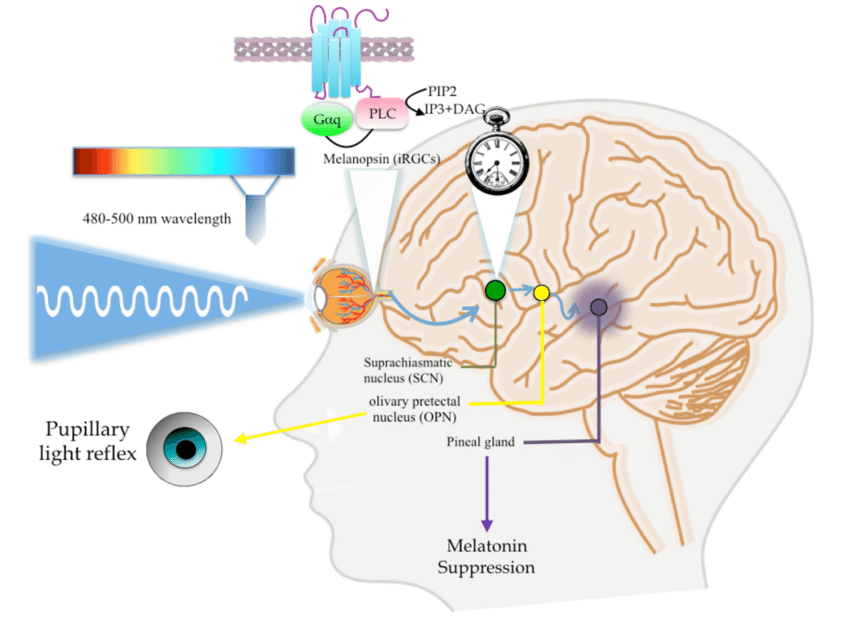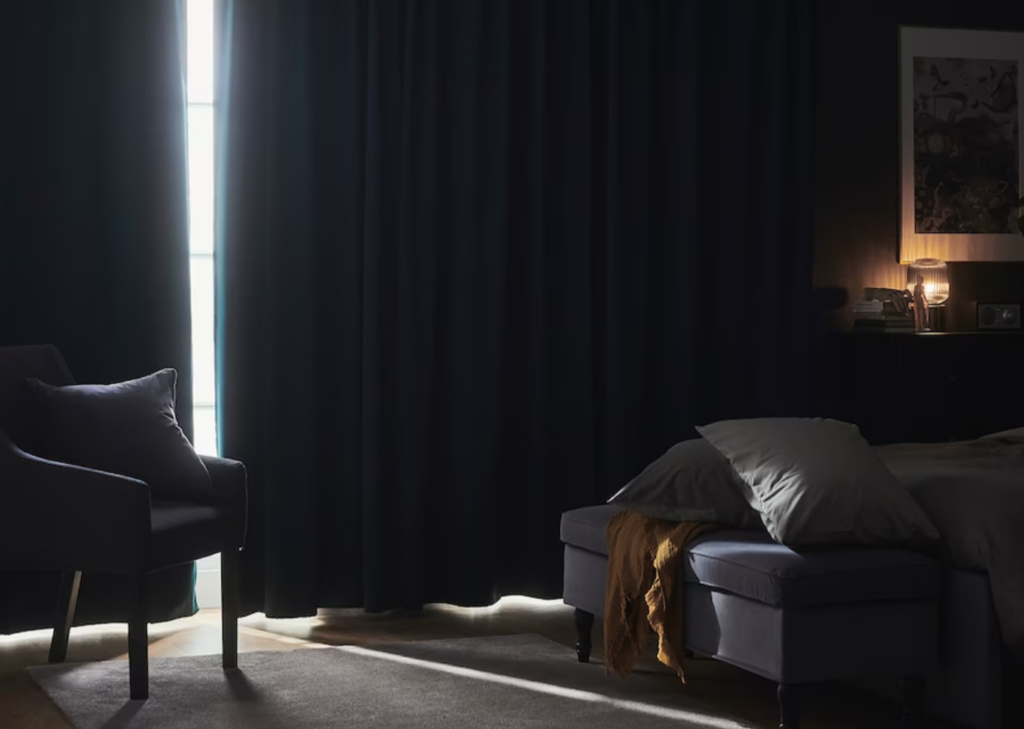By Mads Tömörkènyi
Published August 6, 2022
Your circadian rhythm controls most of your biological processes and is governed by a structure in your hypothalamus called the suprachiasmatic nucleus. This structure receives signals based on light exposure, external temperatures, nutrition, and more.1
When we are exposed to light, then these light photons are transmitted through the melanopsin (the retinal ganglion cells in your eyes), which are then detected by the suprachiasmatic nucleus (your biological clock). Depending on the type of light, the brain registers that it’s supposedly daytime, which naturally starts your cortisol production and makes you feel refreshed.
Even though located in the eyes, these cells remain functional even when vision is either damaged or completely lost. It is for this reason that blind people can still regulate their circadian rhythm even though they are not directly able to perceive the light.2

But light isn’t just light for your eye neurons. They can tell the difference between sunrise, solar noon, and sunset. This is because the angle of the sun, the brightness of the sun, and the color spectrum of the sun change according to the time of the day.
It is of this reason that viewing the sunrise will induce a sensation of becoming refreshed that will last for the entire day, as well as viewing the sunset allows for the brain to detect that nighttime is approaching and melatonin production can begin. This is what makes us feel tired.
This is also why turning on indoor lights at night will confuse your suprachiasmatic nucleus to a degree, where it’s not able to register that it’s nighttime and therefore doesn’t signal to the pineal gland to begin secreting melatonin. This is especially true for overhead lights that resemble the angle of solar noon the most, but also critical when coming from the exposure of screens (i.e. TV and smart phone) that emit sharp blue light. Therefore, blue light blocking glasses are an essential tool for almost anyone in the 21st century.

The same rules apply when there’s no longer light coming in. But instead of feeling refreshed, we become tired. Darkness – or the absence of light exposure in the eye neurons – signals to the ‘biological clock’ that the pineal gland can begin its production of melatonin.
This essentially means that the sooner we turn off the lights and the television, the sooner the melatonin production can begin.
So, what is the problem about blackout curtains? Won’t they induce better and deeper sleep due to the removal of light? And the answer is yes.
But even though darkness induces melatonin production and thereby sleepiness, it also inhibits wakefulness. Therefore, when you wake up in the morning in a dark room, your brain is unable to register that it’s daytime, and your circadian rhythm will therefore be impaired in calibrating sufficiently.
Since the circadian rhythm is designed to synchronize to the transition of increasingly brighter light that a sunrise induces, it will take hours to become fully refreshed from the moment you draw the curtains to let in light.
The takeaway is to understand the impact of light on your circadian rhythm, and thereby sleep.
Use darkness to accelerate sleepiness and use light (preferably gradually increasing light) to induce wakefulness.
Relevant ressources:
[1] Ma MA, Morrison EH. Neuroanatomy, Nucleus Suprachiasmatic. [Updated 2021 Jul 31]. In: StatPearls [Internet]. Treasure Island (FL): StatPearls Publishing; 2022 Jan-. Available from: https://www.ncbi.nlm.nih.gov/books/NBK546664/
[3] Chen, SK., Badea, T. & Hattar, S. Photoentrainment and pupillary light reflex are mediated by distinct populations of ipRGCs. Nature 476, 92–95 (2011). https://doi.org/10.1038/nature10206
[4] Alkozi, Hanan. (2019). Melatonin and Melanopsin in the Eye: Friends or Foes?. Anales de la Real Academia Nacional de Farmacia. 85. 49-59.


















One Response
Thanks for your blog, nice to read. Do not stop.